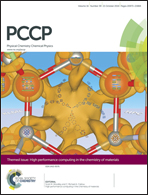A composite cathode based on scandium doped titanate with enhanced electrocatalytic activity towards direct carbon dioxide electrolysis
Abstract
A composite cathode based on redox-stable La0.2Sr0.8TiO3+δ (LSTO) can perform direct carbon dioxide electrolysis; however, the insufficient electro-catalytic activity limits the electrode performances and current efficiencies. In this work, catalytically active scandium is doped into LSTO to enhance the electro-catalytic activity for CO2 electrolysis. The structures, electronic conductivities and ionic conductivities of La0.2Sr0.8Ti1−xScxO (LSTSxO) (x = 0, 0.05, 0.1, 0.15 and 0.2) are systematically studied and further correlated with electrode performances. The ionic conductivities of single-phase LSTSxO (x = 0, 0.05, 0.1 and 0.15) remarkably improve versus the scandium doping contents though the electrical conductivities gradually change in an adverse trend. Electrochemical measurements demonstrate promising electrode polarisation of LSTSxO electrodes and increasing scandium doping contents accordingly improve electrode performances. The Faradic efficiencies of carbon dioxide electrolysis are enhanced by 20% with LSTS0.15O in contrast to bare LSTO electrodes in a solid oxide electrolyser at 800 °C.


 Please wait while we load your content...
Please wait while we load your content...